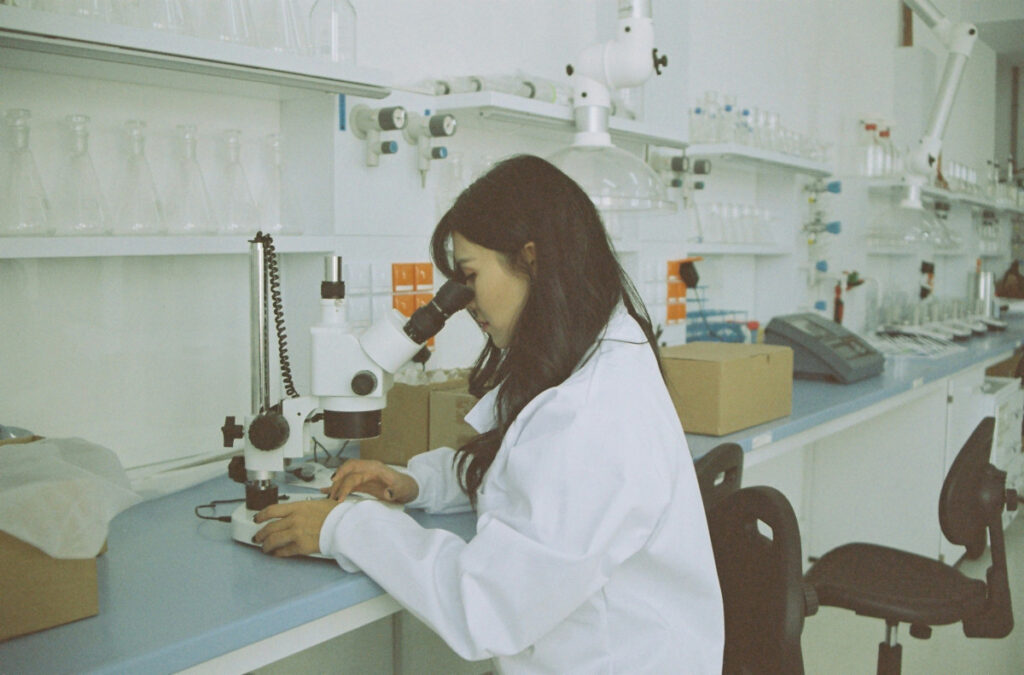By Asmida Isa
Every October 11th, the world marks the International Day of the Girl Child, a day dedicated to celebrating girls, amplifying their voices, actions and leadership everywhere. This year’s slogan, “The girl I am, the change I lead: Girls on the frontlines of crisis” reminds us that girls are not only affected by societal challenges but are also powerful agents of change. Girls want to be seen for who they are and the solutions they bring.
For me, this day is not a distant observance, it is deeply personal. I am a female scientist who has stood on both sides of the classroom; once a curious student in Kedah, now a researcher who hopes to open the door wider for those who want change. In Malaysia, women are well represented in STEM. A 2021 study by the Khazanah Research Institute found that women made up more than 50% of tertiary education graduates, a contrast to global trends. But a closer look reveals a different story. Men still outnumber women in employment, laboratories, and leadership. A 2023 survey showed that some employers prefer to hire men over women to avoid additional costs tied to amendments in the Employment Act, which increased maternity leave from 60 to 98 days. The setback is real. For many girls and young women, the path into STEM may seem possible, but staying and advancing feels much harder.

Why does this matter? Because science belongs to everyone. When girls are discouraged, whether through subtle stereotyping, structural barriers, or lack of support, the world loses potential thinkers, innovators, and leaders. The costs are not just individual, but societal. We lose perspectives, creativity, and solutions born from diversity.
The power of seeing yourself in science
My journey into science was not linear. Growing up in rural Malaysia, I had limited access to high-end resources, with neither opportunities to visit science centres nor inspiring figures to guide me. But I did have the chance to read a few science magazines, returning to them again and again, which sparked my curiosity and made me wonder how things in life actually work.
In school, teachers encouraged wild questions, participation and celebrated small victories that felt enormous. Later, I encountered women scientists, lecturers and colleagues who were living proof that this path was open to those willing to learn, explore, and persist. Representation matters. When a girl sees someone who looks like her, from a similar background, succeeding in science, the idea of a scientific career becomes more than just a dream, it becomes credible and imaginable. Role models don’t remove every obstacle, but they provide the vital first step, belief.
In my outreach work, I remember one girl who started out shy but lit up when she successfully extracted strawberry DNA. Holding up a fork with the clump of DNA, she said, “I didn’t know science could be like this”. For her, it wasn’t just an experiment. It was an invitation into a world she had never imagined before. Consider Tan Sri Dr. Jemilah Mahmood as a living example of what is possible for girls. A doctor by training, she founded MERCY Malaysia in 1999, bringing medical and humanitarian relief to communities affected by disasters and conflict. She later served as the Under Secretary General for Partnerships at the International Federation of Red Cross and Red Crescent Societies in Geneva, and as Special Advisor to the Prime Minister on Public Health during the COVID-19 pandemic. Today, she continues to shape conversations on planetary health, innovation, and humanitarian futures.
Her journey shows that science is not confined to hospitals or laboratories; it is lived out in communities, on the frontlines of crises, and in boardrooms where policy decisions are made. For girls across Malaysia, Dr. Jemilah’s leadership lights the way – proving that science can be both compassionate and transformative, and that women can lead at the highest levels.
Mothers: quiet architects of scientific possibility
Beyond schools and role models, a girl’s encouragement often starts at home. I have witnessed the incredible influence mothers wield. Mothers are often the first science teachers; answering questions about the weather, what happens in the kitchen, or even why things fall. These early moments of curiosity, nurtured by patience and belief, are foundational.
In my outreach journey, I have received many comments and personal messages from mothers. They share how proud they feel when watching their daughters explain concepts or show excitement about science. That pride matters. When a mother affirms her daughter’s curiosity and intellect, she is reinforcing confidence that girls deeply need.
Even simple acts such as a mother buying a children’s science book, reading about famous women scientists together, or simply asking her daughter “What did you discover today?”, send a powerful message that science is not foreign, expensive, or reserved for someone else. Importantly, these acts signal belief, belief that girls can be thinkers, innovators and the future.
Breaking down stereotypes, building up inclusion
When I was growing up, the word “scientist” almost always came with an image of a man in a lab coat. That stereotype still dominates classrooms, media, and cultural imagination. Girls internalise these messages early whether through textbooks, television or seeing who is celebrated. Over time, these subtle signals discourage girls from seeing themselves as part of the scientific community.
To change this, visibility is essential. Women scientists teaching in schools, giving talks, leading research, and being featured in media all help shift the narrative. Policies that support women’s participation, including fair hiring and promotion practices, flexible working conditions, and research funding that recognises diverse contributions are just as crucial.
Mothers, too, can be allies in this struggle, not only by supporting their own children but by challenging stereotypes whenever they hear them. By modelling that science belongs to everyone, mothers play a unique and underappreciated role in reshaping expectations.
Why this matters for all of us
Encouraging more girls into STEM isn’t just about equity, it strengthens science. Diverse teams bring different perspectives, ask different questions, and often unlock more creative or resilient solutions. Whether in public health, environmental science, engineering, or technology, the challenges ahead demand all hands on deck.
Moreover, when girls see women leading in laboratories, classrooms, and fieldwork, they don’t just imagine a career, they imagine themselves in it. That reshapes more than professional paths; it shifts identities, nurtures confidence, and builds communities where curiosity thrives.
Looking forward
On this International Day of the Girl Child, with its theme “The girl I am, the change I lead: Girls on the frontlines of crisis”, let us remember both the promise and the responsibility. The promise, because girls have already proven themselves brave, resilient, and creative. The responsibility, because the systems around them must catch up.
What do we need to do? We need more women scientists stepping forward as role models. We must support more mothers in championing their daughters’ curiosity. More institutions that welcome and retain women. More classrooms where science is accessible, playful, and rooted in everyday wonder.
When I see the eager faces of girls in my workshops, I see possibility, not just for scientific discovery, but for leadership, empathy, and change. And standing behind many of those girls is a mother, often unsung, who believes, supports, and dreams.
Science belongs to everyone. On this day, and every day, let us make sure our classrooms, workplaces, policies, and communities reflect that truth.

Dr Asmida Isa is a senior lecturer and researcher at Institut Perubatan dan Pergigian Termaju (AMDI), Sains@Bertam, Universiti Sains Malaysia (USM)
